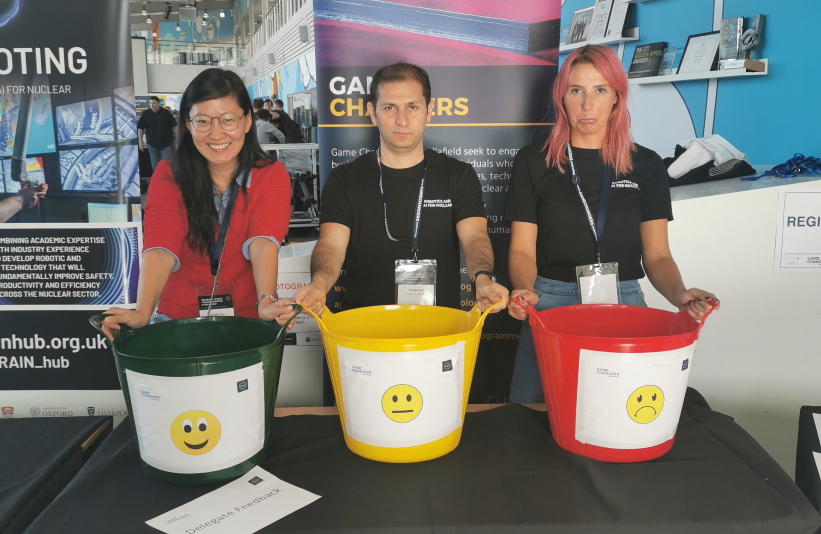Over 350 people joined us in Cumbria for an event centred on the past, present and future use of Robotics and AI at Sellafield.
In collaboration with Sellafield and the Game Changers program we coordinated an event with the following aims:
- Demonstrate the current use of robotics at Sellafield
- Invite Sellafield’s workforce to help shape the future role of robotics in decommissioning
- Showcase next-generation robotic developments
- Showcase progression within the RAIN Hub
- Stimulate ideas, discussion and future innovation
A combination of talks, technology demonstrations, and workshops were used to achieve all of these goals, and more.
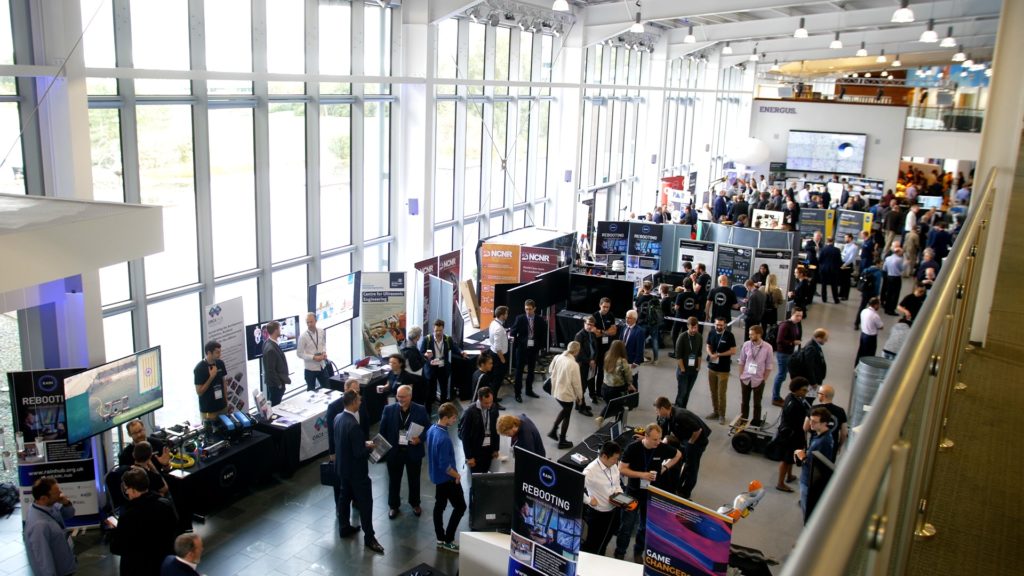
The day opened with a welcome from Chris Ballard, the robotics and AI integrated research lead at Sellafield, and a buzzing exhibition space. The technology exhibition was loosely split into 3 zones: academic, supply chain, and technology already in use at Sellafield. Over 30 research groups, companies, or Sellafield teams were exhibiting their technologies that including inspection platforms and sensors, submersibles, remote handling mechanisms and AI for mission planning and training. It was a hugely diverse and interesting exhibition and we are grateful for everyone that brought technology along.
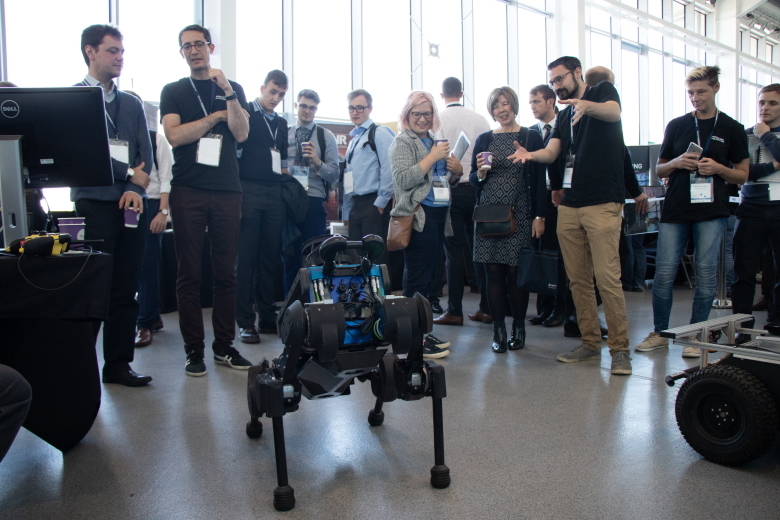
Much of the morning was also filled with seminars. Presentations from Sellafield and the Nuclear RAI Hubs gave end user perspectives on the challenges and opportunities for robotics and AI, as well as an overview of capabilities and recent successes in innovation. Alex Harvey, from Ocado, offered the view from an industry that has embraced robotic and AI technology with great success. The cultural impact that increased use of robotics and AI is likely to have is important to consider and manage in order to make the uptake of these technologies a success.
The Game Changers programme has released three new challenges and these were introduced in workshops during the afternoon. These challenges are; deployment solutions for working at height, removal of Special Nuclear Material (SNM) packages, and inspection of SNM packages. Successful applicants to these challenges will be invited to demonstrate their solutions at the University of Manchester’s Robotics for Extreme Environments Lab (REEL) early in 2020.
There were two further afternoon workshops not related to the Game Changers challenges. One of these was specifically for Sellafield employees and centred on the question “What does robotics and AI mean to you?” If RAI technologies are going to make more on an impact on Sellafield site, it is very important to understand how this is likely to affect the staff working there already. This session allowed Sellafield employees to discuss the potential for RAI and the impact that may have. The final workshop, on certifiable autonomous robotics and AI, was led by the RAIN Hub’s Safety Case working group. Verification and validation of any technology that will work autonomous is fundamental to ensuring safety, and this is even more critical in high hazardous environments such as the nuclear industry.
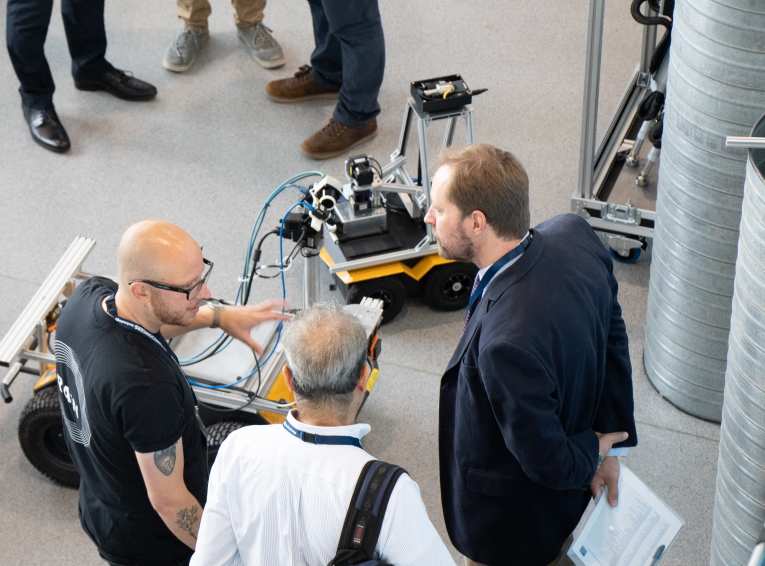
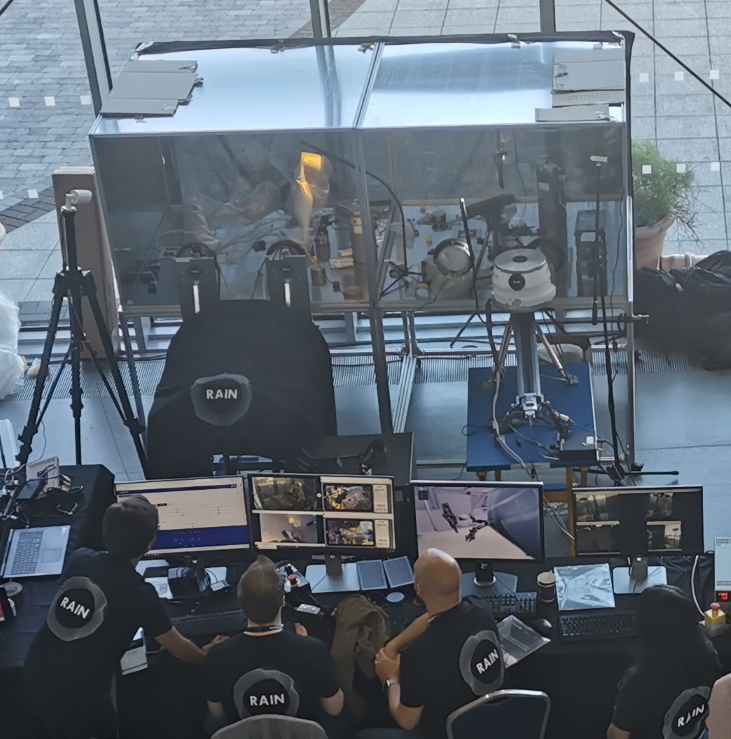
The event was oversubscribed and had a waiting list, highlighting how interested people are in nuclear robotics, and how valuable a day like this is. The exhibition space was buzzing throughout the morning and over lunch. It was particularly enlightening to see how much robotic technology is already used on site at Sellafield. The RAIN remote inspection and remote handling working groups also got to show how much they have progressed over the last 6 months. They have had hackathons and collaborative work, integrating technology from various institutions to work towards providing multipurpose solutions as opposed to bespoke individual pieces of technology. The next working group demonstrations will be held in January at RACE, we look forward to welcoming everyone there to see yet more progress.
